On this page you will find information on the:
Sweet Gum Sweetbay Magnolia Tupelo Gum Water Oak
Sweet Gum
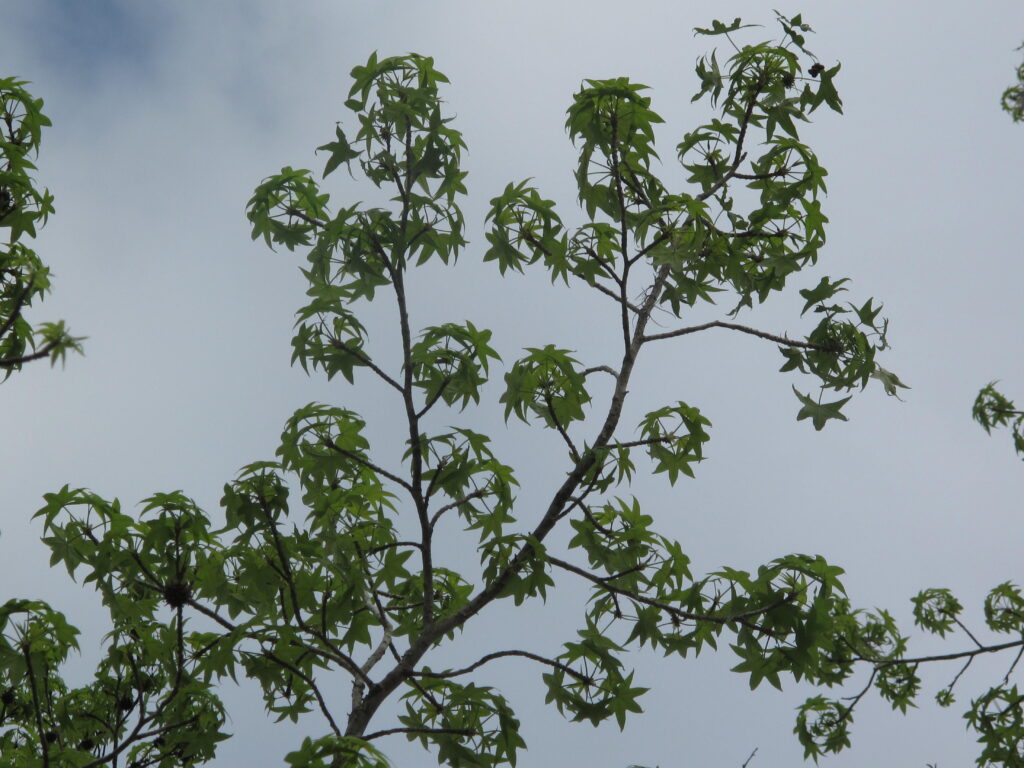
Common Name(s): Sweetgum Tree, Monkey Ball Tree, Sputnik Tree
Scientific name: Liquidambar styraciflua
Type: Tree
Habitat: swamp/drained area
Found on both sides of the Greenway
Native
Perennial
The Sweet Gum tree is a moisture-loving tree that favors bottomlands. It has star-shaped leaves that sprout from the end of each branch in the spring in a curious spiral pattern. The tree’s leaves are among the first to fall in the autumn.
Their flowers yield a multitude of spiky, round seedpods known as “monkey balls” or “sputniks.” They contain small seeds that spill out of the ball, leaving holes. The green balls turn brown and gradually fall out of the tree over the course of the fall, winter and spring to cover the ground below.
Sweetbay Magnolia
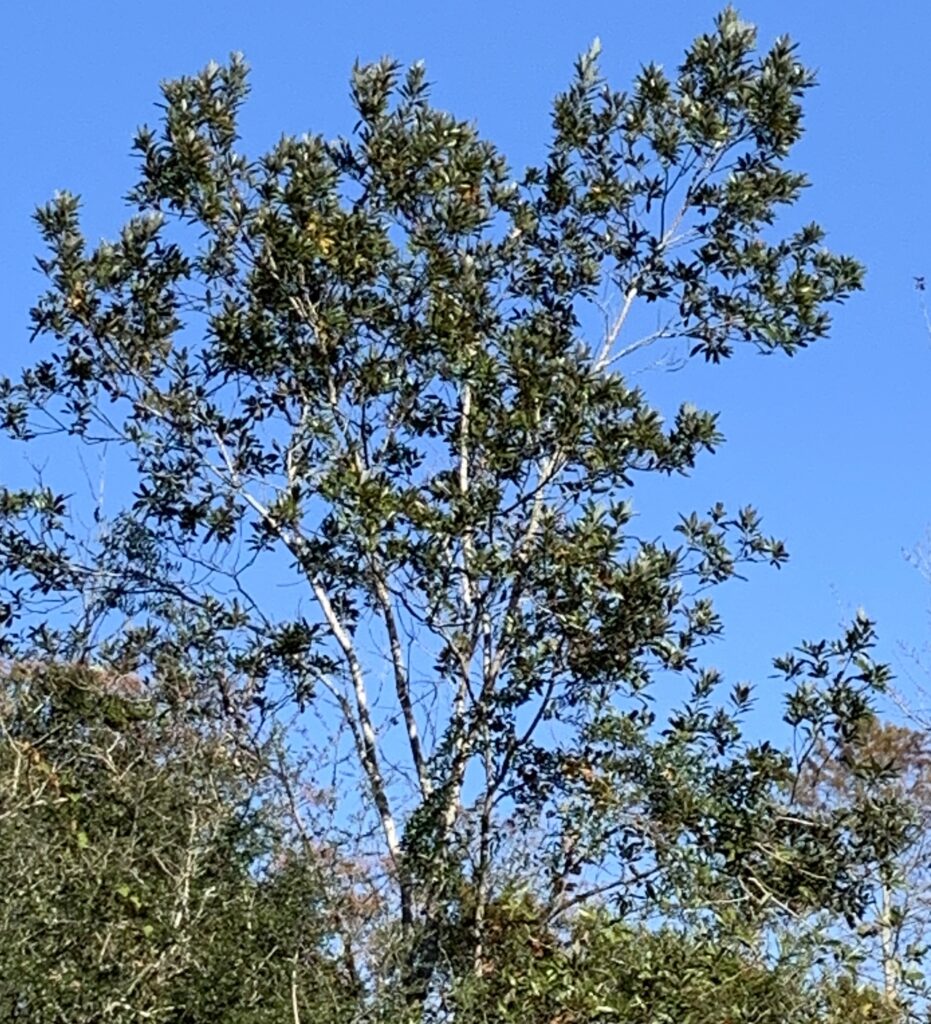
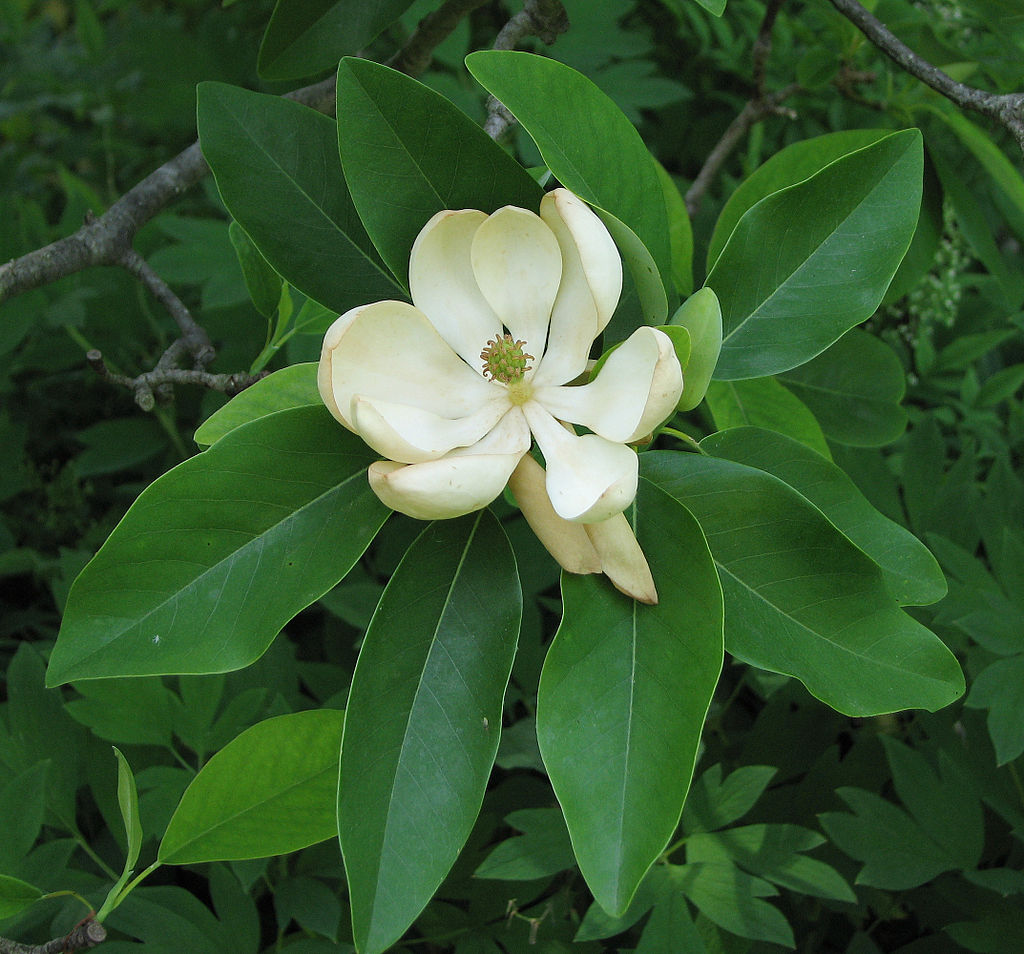
Common Name(s): Sweetbay magnolia, Sweetbay, Laurel Magnolia, Swampbay,
Swamp Magnolia, Whitebay or Beaver Tree
Scientific name: Magnolia virginiana
Type: Tree
Habitat: Drained and damp soils
Found on both sides of the Greenway
Native
Perennial
While not as large and as well known as their dark green cousins, the Southern Magnolia (Magnolia grandiflora), the Sweetbay Magnolia is much more numerous on the Greenway. They have finer, smaller leaves, large, white, odiferous blossoms and similar bright red seed-pods. The bottoms of their leaves are silvery and in a breeze the whole tree flutters like used car-lot pennants.
Tupelo Gum
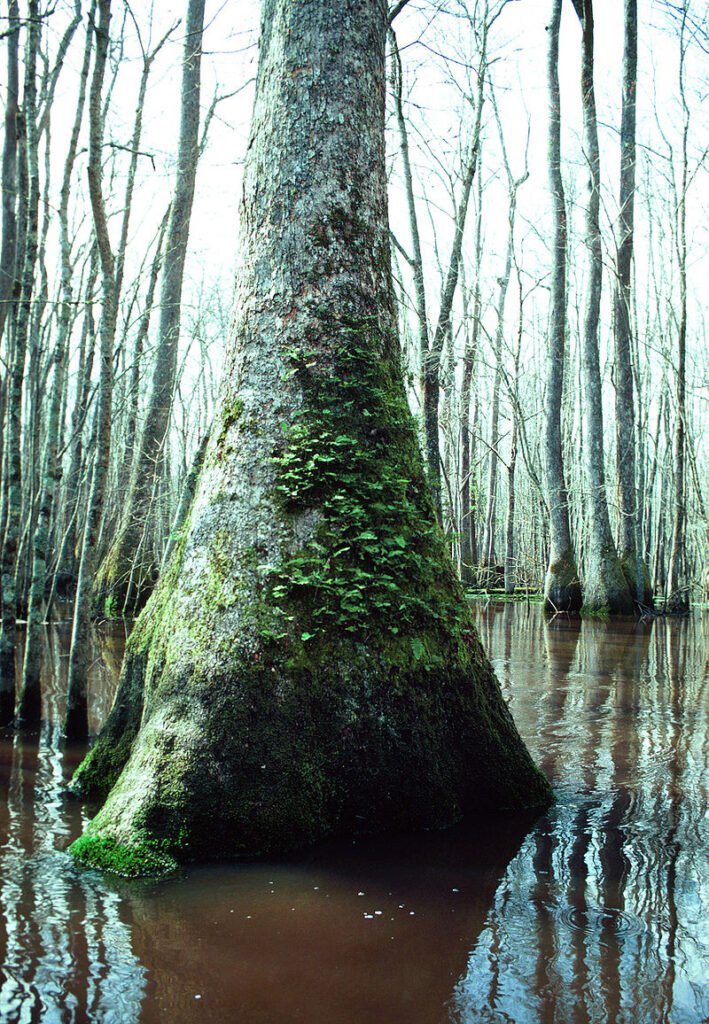
Common Names: Tupelo Gum, Water Tupelo] tupelo-gum or water-gum
Scientific name: Nyssa aquatica
Type: Tree
Habitat: swamp
Found on both sides of the Greenway
Native
Perennial
Tupelo Gum mostly grows in inundated swamps, side by side with Bald Cypress. Both trees have flared “bell-bottom” shaped trunks that help them hold their own in the mucky soil. The Fall is when these trees part ways, the Cypress holding on to its needles as they turn lovely cinnamon brown, the Tupelo quickly dropping its pointy leaves well before the air even gets chilly.
Water Oak
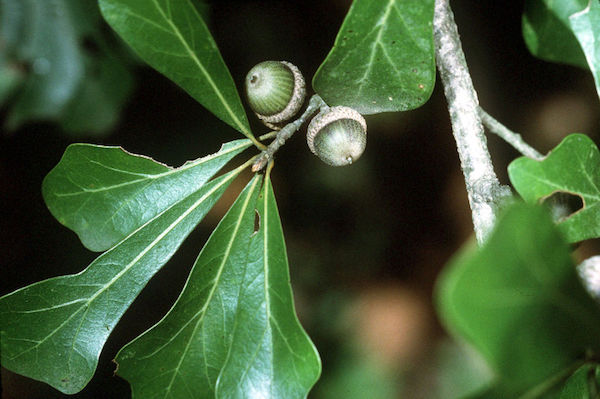
Common Name(s): Water Oak, Punk Oak, Spotted Oak, Possum Oak
Scientific name: Quercus nigra
Type: Tree
Habitat: Drained soils
Found on both sides of the Greenway
Native
Perennial
Two of the reasons why Water Oaks are so successful is because they grow in a range of soils and spew out thousands of acorns. These are in the diet of deer, raccoons, turkeys, ducks and quail but it is the Grey Squirrel that buries up to a thousand of these each year then fails to return to them before nature takes its course. This why there are thousands of scraggly, stunted Water Oak saplings crowded in the shaded woods with little chance of achieving any stature.
The tree’s stiff, spatula-shaped leaves are dull green on top and pale underneath where a tiny wasp might sting the young, tender leaf and cause it to react by growing a small tan, puff-ball in which the wasp’s babies grow all summer while sucking up the tree’s juices.
Water Oaks grow quickly and can attain HUGE proportions as they provide beauty and shade to a homestead. Once they do this, they may start dropping their giant limbs on houses, yards and cars as they gradually die in a squalid, destructive manner, causing heartache for homeowners who were once quite proud of their lovely, quick-growing shade tree.
